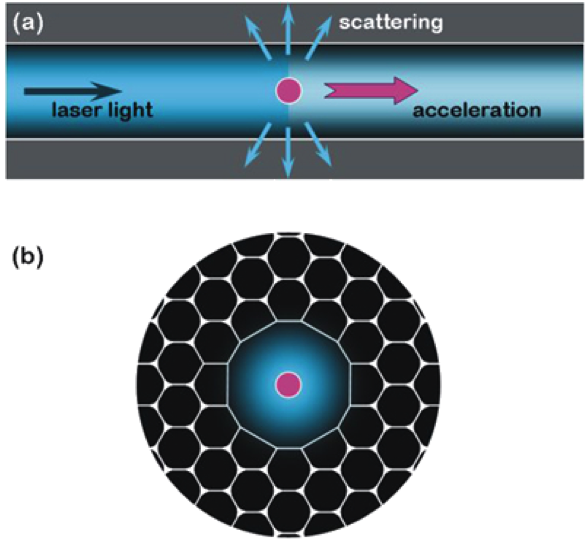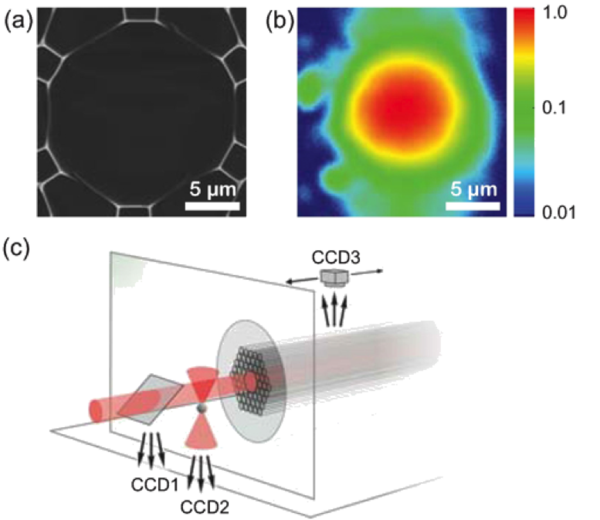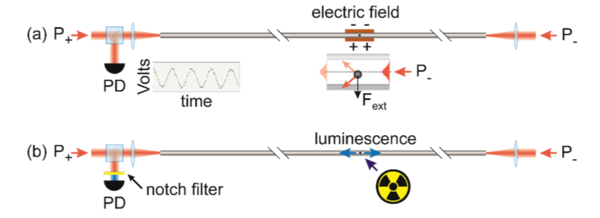Particle guidance in hollow-core photonic crystal fibres
When a ray of light is refracted by a particle, part of its momentum is transferred to the particle, resulting in a force [Ashkin (1986)]. For spherical dielectric particles near the focus of a laser beam, the resulting gradient force pushes the particle towards the high intensity central part of the beam. This gradient force is exploited in optical tweezers, which has become a widely used tool in biophysics. We are carrying out detailed studies of optical trapping and propulsion using the well-defined optical guided mode in a hollow-core photonic crystal fibres. In this case the lateral trapping and propulsive forces are constant along the entire length of the fibre, provided the optical losses are sufficiently small. Our goal is study opto-mechanical interactions between guided optical modes and trapped particles, and to explore novel applications.









